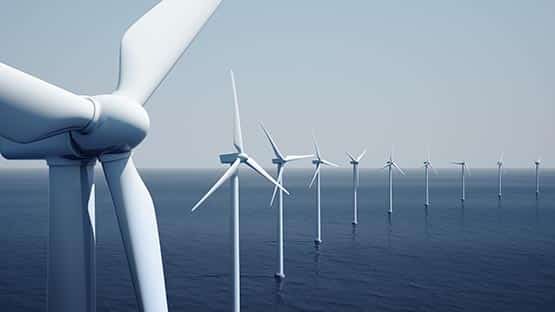
Dear EarthTalk: What is wind repowering and why are environmentalists so bullish on it? – H. King, Mesa, AZ
One of the most common forms of clean energy is wind power. People from around the world could recognize a wind farm from just one look. While wind power has been a staple in renewable energy since the idea’s inception, many of the original and old wind turbines have begun to show signs of aging. Wind repowering aims to fix this, by revamping old turbines with more efficient components, or putting in new, state-of-the-art turbines as a whole. These new components and units can reduce noise, more efficiently power a turbine, and a deliver a higher overall energy output.
Denmark, an early adopter of wind repowering, saw a 1.3 GW gain in capacity and a reduction of 109 wind turbines, enabling substantially increased wind energy production with fewer turbines. This promising data prompted a surge in wind repowering projects, and in 2019, 86 percent of wind energy projects there were classified as “repowered.”
These signs of success and scalability showed other countries the benefits of wind repowering. The U.S, with help from large energy corporations like General Electric, has more than 40 active wind repowering sites, with over 2,500 turbines having some type of renovation. This hefty wind repowering advancement is responsible for four gigawatts of energy, or the power for more than 30 million homes.
It’s no secret how fast wind repowering is growing, but upgrades can be made to many different types of renewable energy. Why do eco-advocates support wind repowering so strongly? Wind repowering has energy, financial, aesthetic and technological benefits. Not only does it make units more efficient, it also removes units that might be aesthetically unpleasing, or in less efficient spots than they could be. Wind repowering also increases the lifespan of turbines by as much as 20 years, and reduces the need for maintenance. Repowered turbines are also quieter, sleeker, and produce considerably more energy.
So, while there are many types of repowering efforts for other renewable energy sources, none are as comprehensive or successful as wind repowering. Not only is it a comprehensive option for revamping clean energy, but it does not require the entry costs that just building new wind farms requires.
The only barrier to wind repowering at the moment is legislation. Bills and policies cannot keep up with the demand for it. Readers should call local officials, or urge any nearby wind farms to look at wind repowering. Spreading awareness is the first and most important step.
CONTACTS: Wind Repowering Helps Set the Stage for Energy Transition, www.energy.gov/eere/wind/articles/wind-repowering-helps-set-stage-energy-transition; Upgrades and refurbishment for your onshore wind assets, www.ge.com/renewableenergy/wind-energy/onshore-wind/services/upgrades-refurbishment; Time to repower your wind energy site? www.barr.com/Insights/Insights-Article/ArtMID/1344/ArticleID/536/Time-to-repower-your-wind-energy-site.
EarthTalk® is produced by Roddy Scheer & Doug Moss for the 501(c)3 nonprofit EarthTalk. See more at emagazine.com. To donate, visit earthtalk.org. Send questions to: [email protected].









